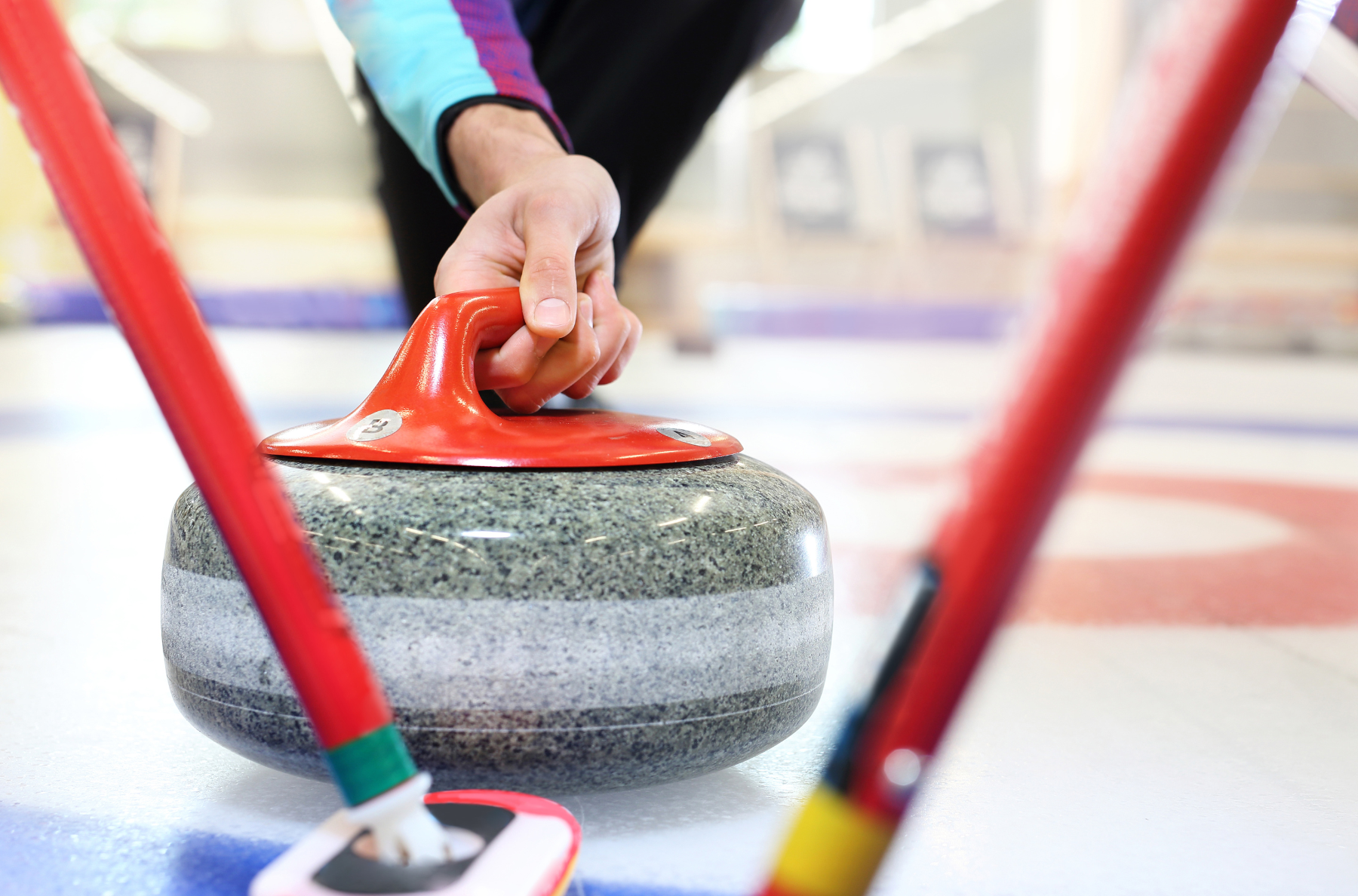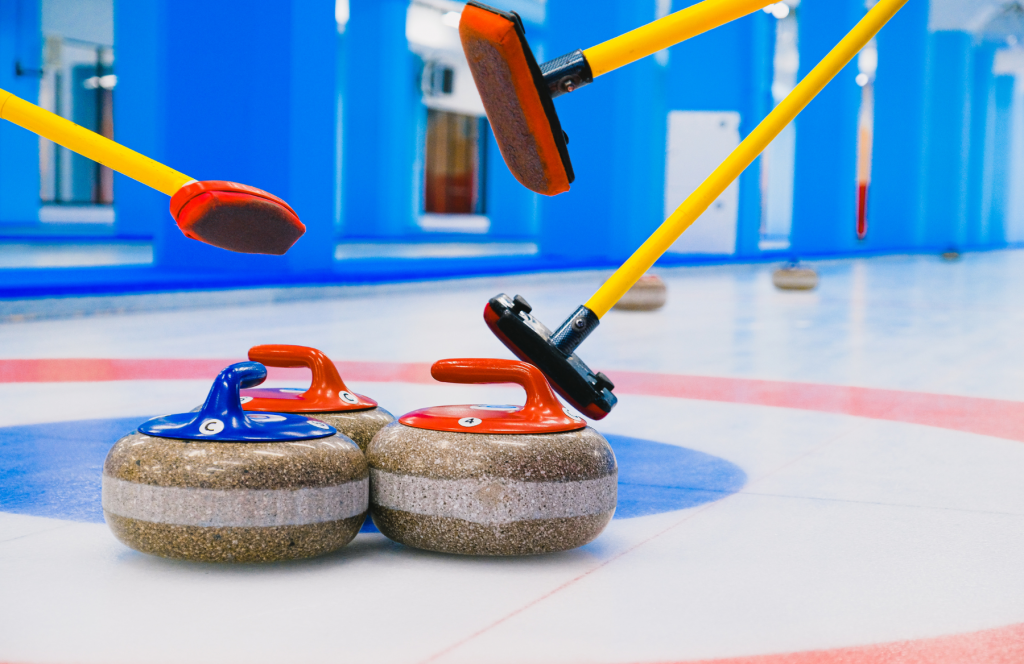
Curling 101: An Introduction to the “Roaring Game”
Published on January 25, 2024
This winter, Chicago has three bars with rooftop curling: Upstairs at the Gwen Hotel (River North), Stone’s Throw at the Emily Hotel (Fulton Market), and Harry Caray’s Tavern (Navy Pier). Another West Loop restaurant, Kaiser Tiger, has an indoor curling rink. Those looking to take lessons or join a league can check out the Chicago Curling Club (Northbrook) and Windy City Curling (Villa Park). And while you’re at it, take eATLAS’ Sip History: Chicago Cocktail Adventures (Part 1 and Part 2), which visit bars in some of the city’s most famous buildings.
By Dave Lifton (@daveeatschicago)
The earliest known references to curling are from the 16th century, with a stone dated 1511 on display at the Stirling Smith Art Gallery and Museum in Stirling, Scotland. A 1540 report details a competition between two people that could be an early version of the sport, and a pair of Pieter Bruegel paintings depict stones being thrown on a frozen pond. But it wasn’t until a Henry Adamson poem from 1620 that the game was called “curling,” after the way the rocks curve when thrown. Over the years, curling became known as “The Roaring Game” due to the sound made as the stones travel across the ice.
Curling clubs began popping up all over Scotland and other countries that experienced Scottish migration, such as the U.S., Canada, Sweden, and Norway. But there were no standardized rules until 1838, when the Grand Caledonian Curling Club was founded in Edinburgh with the purpose of codifying the sport. The club became the sport’s governing body, and its name was changed to the Royal Caledonian Curling Club by decree of Queen Victoria five years later.
The first officially recorded international curling tournament (known as a “bonspiel”) was held in 1924 at the inaugural Winter Olympics in Chamonix, France, with Great Britain beating Sweden and France. But no medals were awarded—although they were awarded retroactively in 2006—and curling didn’t return to the Olympics until 1932, as a demonstration sport.
Needing a proper organization to create rules for international play, the Royal Caledonian Curling Club formed a committee called the International Curling Federation in the mid-‘60s, with six charter countries: Scotland, Canada, Norway, Sweden, Switzerland, and France. The U.S. joined a year later. Over the next 20 years, global championship bonspiels for men’s, women’s, and junior competitions were established. The ICF was spun off into its own body in 1982, and changed its name to the World Curling Federation in 1990. The word “federation” was dropped in January 2024 as part of a rebranding.

After two more trial runs in the 1988 and 1992 Winter Olympics, curling was upgraded to medal sport. It made its debut in 1998, where the sport was introduced to American audiences beyond its base in northern states. A mixed doubles tournament was added in 2018, the same year that the U.S., led by John Shuster, won its first curling gold medal.
At its core, curling seems like a simple sport. Teams of four alternate throwing eight stones each across a sheet of ice at a target (the “house”) on the other side. Two teammates use brooms to sweep the ice to control the speed and the amount of curl. After all the stones have been thrown, the team whose stone is closest to the center of the house (the “button”) is awarded points based on the number of stones closest to the button before the opposing team’s stones. After eight or 10 rounds (“ends”), the team with the most points is the winner. Upon conclusion of the match, it is customary for the winning team to buy the first round of drinks.
However, within that basic framework are chess-like levels of strategy. Generally, the team that throws first will defend the house by setting stones in front of it (“guards”) and the second team attacks the house, either by taking the guards out of play or curling the stones around them. The goal is to put the captain (“skip”) in a position to put the rock on the button with the last throw of the end (the “hammer”). If the team with the hammer scores points, the hammer transfers to the other team.
But if a stone misses its intended mark by even a few degrees or is thrown too hard or soft, both sides could be forced to change their approach. For example, the first team could play more aggressively to try to win points (“steal the hammer”) and the second could look to avoid scoring points (“blanking the end”) so that it could retain the hammer and try again in the next end.
If all that sounds confusing, watch a curling match and it will make sense within a few ends. The U.S. Men’s and Women’s National Championships run from Jan. 29-Feb. 4. Check USA Curling’s website for the most up-to-date information regarding streaming.

The Adventure starts when you say it does.
All eATLAS Adventures are designed and built by experienced eATLAS Whoa!Guides. They're always on. Always entertaining. And always ready to go.
Check out our Adventures!